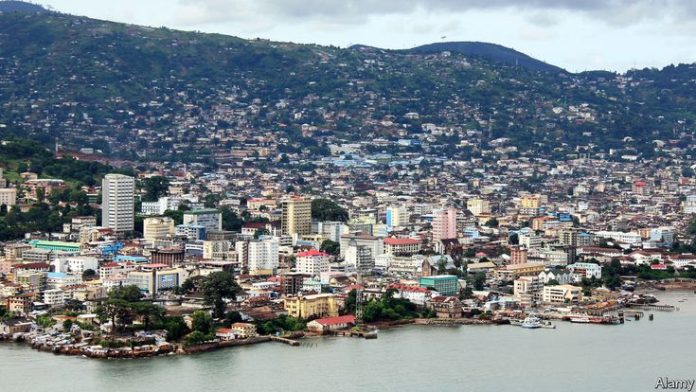The world’s cities are now seeking a record US$105 billion to finance climate resilience and infrastructure projects, according to the 2025 Global Snapshot released by CDP and the Global Covenant of Mayors for Climate & Energy (GCoM). The figure represents a 22 percent increase over 2024, underscoring how rapidly the costs of adapting to a changing climate are outpacing available capital.
The findings, unveiled at the COP30 Local Leaders Forum in Rio de Janeiro, draw on disclosures from 507 cities across 62 countries and reveal a widening mismatch between urban ambition and actual financing. In the press release, CDP also presented a companion report dubbed, Protected Places, highlighting how lack of finance keeps many local climate plans from reaching operation. In India, only 5% of planned climate actions are fully implemented, compared to 75% in Japan and 86% in China. Latin America and Africa show only 23% and 31% of actions in operation, respectively.
For Africa, where 60 percent of the urban population expected by 2050, Many African cities are on the frontlines of climate impact, from coastal flooding in Lagos and Dar es Salaam to heat stress in Nairobi and water scarcity in Windhoek. Yet they have the least access to credit and capital markets. As global urban investment needs pass the US$100 billion threshold, the question is no longer whether cities are planning for climate resilience, but whether they can pay for it.
CDP’s analysis found that buildings and energy efficiency lead 2025’s climate project portfolio, with 420 initiatives disclosed globally. Green infrastructure follows closely with 338 projects, and sustainable transport with 336.
Examples illustrate the breadth of urban innovation: Porto aims to electrify 43 percent of its bus fleet by 2027, Freetown’s “Treetown” initiative has registered 1.2 million trees, while Buenos Aires is rolling out a community solar program projected to cut 217,000 tonnes of CO₂ emissions annually. These efforts reflect a growing municipal determination to address climate risk through tangible, community-level action, even as funding shortfalls threaten to slow momentum.
According to the report, 87 percent of projects disclosed this year still require financing, with nearly half entirely unfunded. In emerging markets, the challenge is more severe: 40 percent of climate projects seek full financing, compared to just 22 percent in developed economies. Investment concentration remains skewed toward wealthy regions, with the United States and United Kingdom alone accounting for two-thirds of total disclosed financial needs.
Meanwhile, developing countries host 40 percent of projects but receive a fraction of available funds. Only seven percent of projects that identified a financing model rely exclusively on private capital, suggesting that public and concessional finance remain indispensable to bridging early-stage risk.
The disparities translate into sharp differences in implementation. In India, just five percent of planned city climate actions have been fully executed, compared with 75 percent in Japan and 86 percent in China. Across Africa, implementation stands at 31 percent, slightly ahead of Latin America but far below the global average. These figures underline a persistent imbalance between the ambition of local governments and the fiscal autonomy needed to realise their plans.
One bright spot is the rapid rise of nature-based urban solutions, which have quadrupled in number since 2020. Between 2020 and 2024, the share of disclosed nature-focused projects grew from seven percent to 15 percent of the total, including tree restoration, wetland recovery, green corridors, and urban cooling networks. Such initiatives are increasingly viewed as dual-purpose investments that deliver both mitigation and adaptation benefits.
For African cities, they represent some of the most cost-effective strategies for resilience, leveraging natural systems rather than capital-intensive hard infrastructure. Yet, without sustained financing pipelines, much of this potential remains unrealised.
Globally, the US$105 billion disclosed this year represents only a fraction of what cities will require to adapt at scale. CDP estimates that urban areas need roughly US$4.5 trillion every year for mitigation and adaptation, a figure that dwarfs current funding flows. Less than 10 percent of global climate finance currently reaches cities directly, leaving most dependent on national governments or multilateral intermediaries such as the World Bank and Green Climate Fund. The resulting bottleneck means even well-designed projects stall before they can reach implementation.
To address this, CDP and GCoM are calling on policymakers to reform the financial architecture underpinning urban climate action. Recommendations include embedding municipal priorities within Nationally Determined Contributions (NDCs), establishing risk-sharing instruments to crowd in private capital, expanding initiatives such as the Coalition for High Ambition Multilevel Partnerships (CHAMP), and standardizing disclosure frameworks to improve investor confidence.
Katie Walsh, CDP’s Head of City Climate Finance, described the moment as pivotal. “The financing tap for cities, especially in developing economies, must be fully opened to turn plans on paper into projects on the ground,” she said. Asma Jhina, Senior Advisor at GCoM, echoed this urgency, noting that nearly half of all disclosed projects remain without funding.
For African cities, the report’s findings serve as both warning and opportunity. Urban resilience is no longer a peripheral issue, it is the foundation of economic stability and public safety. Whether addressing sea-level rise in Mombasa or extreme heat in Accra, financing climate adaptation is now inseparable from financing urban development. As COP30 approaches, CDP’s message is clear: without systemic investment in city-level climate infrastructure, global climate goals will remain beyond reach, and nowhere is that reality more immediate than in Africa’s fast-growing urban corridors.
Access the report, here.






